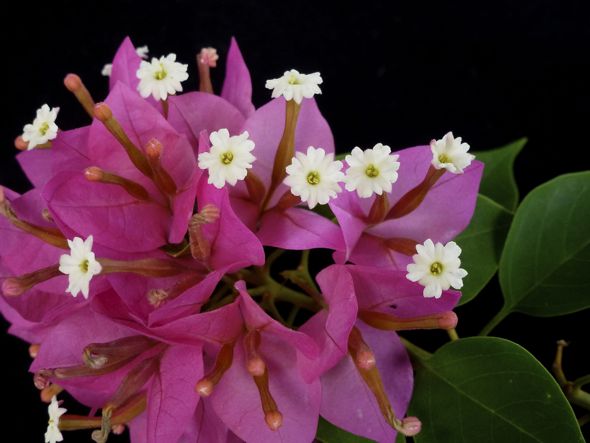It was a hot evening and the sun was shining over my pot of Bougainvillea plant. Suddenly I noticed a lone Lime Butterfly (Papilio demoleus malayanus) flitting from flower to flower. The butterfly was always on the move, never stopping for long on the flowers, making photography difficult. It was definitely sipping nectar from the flowers (above, below). This went on for about 5 minutes before it flew off.
Singapore’s Garden City has long depended on Bougainvillea to provide colours to the greenery. These scrambling plants regularly burst into blooms after a prolonged drought.
The colourful “flowers” are actually the three petaloid bracts (above), each bearing a whitish tubular flower (below, with 3 of the 5 stamens showing).
I have often heard locals commenting that this plant, although colourful, are sterile as far as wildlife is concerned. Well not actually. All plants have their very own complement of fauna and these in turn attract birds. In addition, the flowers provide nectar to birds LINK.
Not many butterflies are attracted to bougainvilleas. From the internet I uncovered two sites – LINK 1 and LINK 2.
YC Wee
Singapore
July 2015


![LimeButterfly-bougainvillea [wyc] - 4](https://besgroup.org/wp-content/uploads/LimeButterfly-bougainvillea-wyc-4.jpg)
![LimeButterfly-bougainvillea [wyc] - 3](https://besgroup.org/wp-content/uploads/LimeButterfly-bougainvillea-wyc-3.jpg)

![Bougainvillea fl [wyc] - 2](https://besgroup.org/wp-content/uploads/Bougainvillea-fl-wyc-2.jpg)







2 Responses